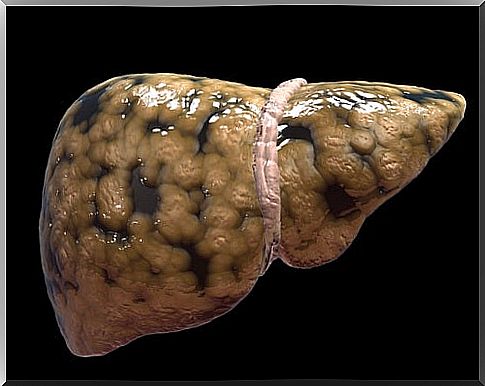Hepatic Steatosis
Hepatic steatosis is popularly known as “fatty liver” and is mainly associated with alcohol consumption, obesity and diabetes.

The hepatic steatosis is popularly known by the name of: fatty liver. This condition has to do with the excessive accumulation of triglycerides in the liver. As a consequence, the organ increases in size. In addition, drops of fat appear throughout the liver tissue, in a scattered way, which can even be noticed with the naked eye.
A normal liver contains fat, in a proportion of up to 10%. When this value is increased, it is a sign that the organ is accumulating fat. The more fat accumulates, the greater the risk of injury to the liver. Currently, hepatic steatosis is the leading cause of chronic liver disease.
It is estimated that between 20 and 30% of the population have fatty liver. The numbers have increased in the world. In part, because diabetes and obesity have also increased. And in part because the accessibility to abdominal ultrasound is now much greater and hepatic steatosis is more easily detected then .
Characteristics of hepatic steatosis

Until a few decades ago, excessive alcohol consumption was thought to be the sole cause of fat accumulation in the liver. It was also believed that the presence of liver fat was always very harmful. Today, it is known that hepatic steatosis has multiple causes and that it does not always cause significant damage.
This liver disorder is currently spoken of as a manifestation of metabolic syndrome in the liver. In most cases it is a benign process, which is perfectly reversible. With proper treatment, it does not cause major damage.
Of course, the opposite is also true. If there is excess fat, for a long time liver cells are damaged and this causes them to become inflamed. This condition is called fatty hepatitis or steato-hepatitis. Here we are already talking about a serious situation, since in up to 20% of cases this condition evolves and becomes liver cirrhosis.
Causes of hepatic steatosis

Although excessive alcohol consumption is not the only cause of hepatic steatosis, the truth is that up to 90% of those who abuse this substance have this anomaly. However, there is also nonalcoholic fatty liver disease. This appears in people who do not drink liquor, and even in children.
A close relationship has been detected between obesity and hepatic steatosis. Only 10% of people with a normal body mass have fatty liver, while in obese people, the percentage is 80%. Up to 50% of children with obesity have this problem. Other risk factors for developing fatty liver include the following:
- Consumption of some medications
- Rapid weight loss
- Abdominal surgeries
- High triglycerides
- Mellitus diabetes
- High cholesterol
- Malnutrition
- Pregnancy
It is not very common, but a person of low weight, with a healthy diet and totally abstemious can have hepatic steatosis. This condition is more common in women, because the presence of estrogens favors it.
Symptoms and Diagnosis of Hepatic Steatosis

In up to 30% of cases, there are no symptoms. When there are noticeable signs, it is very common for people with fatty liver to have the following symptoms:
- Pain in the abdomen. It is not intense, but it is constant and appears on the right side of the abdomen, or in the pit of the stomach, after eating even something light.
- Loss of appetite
- Drowsiness.
- Diarrhea.
- Threw up.
- Asthenia.
Whenever someone consumes too much alcohol, or is obese, they should be suspected of having fatty liver. The most common tests to confirm the diagnosis, in all cases, are:
- Blood tests. They evaluate the index of liver enzymes (transaminases and bilirubin). These tests suggest the presence of hepatic steatosis, but do not confirm it.
- Abdominal ultrasound. This examination is also not conclusive, but it allows to rule out other abnormalities.
- CT and nuclear magnetic resonance. They show with greater degree of certainty the presence of fat in the liver and its proportion.
- Biopsy. This is a conclusive test, which also confirms or rules out the incidence of alcohol in the condition.
Hepatic steatosis: final comments
The prognosis of hepatic steatosis is highly variable. In some cases, the simple presence of fat in the liver does not lead to any difficulties. In other cases, the fat deposits begin to progress and lead to hepatitis, cirrhosis, or liver carcinoma. Finally, emphasize the importance of taking care of your diet and lifestyle. In any case, you should consult a specialist in the case of suffering from this pathology.









